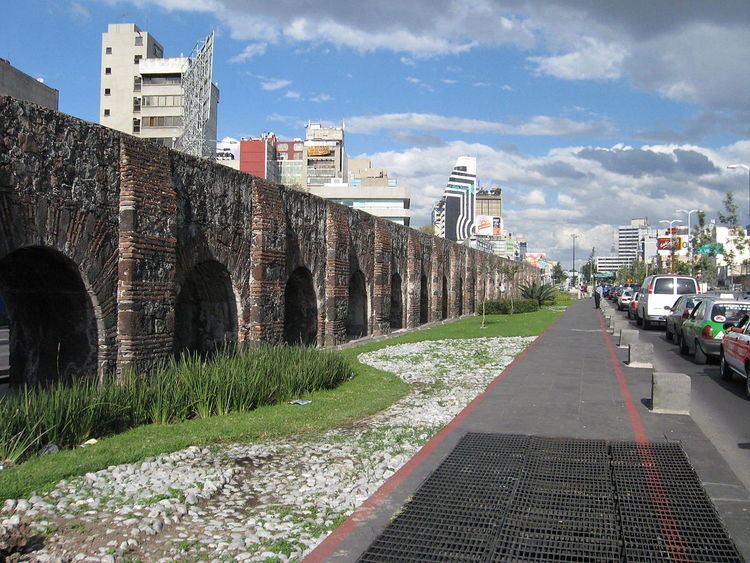 | ||
Address Cruce con Varsovia, Av Chapultepec, Juárez, 06600 Ciudad de México, CDMX, Mexico Similar Metro Salto del Agua, House of the Marquis o, Library of the Congress, Garden of the Triple Alliance, Church of San Bernardo | ||
The Chapultepec aqueduct (in Spanish: acueducto de Chapultepec) is an aqueduct built to provide potable water for Mexico City from Chapultepec (originally outside city limits). An aqueduct was first built by the Aztecs during the Tenochtitlan era and was destroyed during the Siege of Tenochtitlan. The remains of the Viceregal era aqueduct are located near Metro Sevilla.
Contents
Aztec aqueduct
The project was started under the tlatoani Chimalpopoca and modified by Moctezuma I. It consisted of a twin-pipe construction made of compacted earth and wood; when one pipe needed maintenance, the water flowed through the other. Where it crossed Lake Texcoco, the aqueduct was raised above the water level to allow canoes to pass. While the Tenochtitlan rulers ordered the building of the aqueduct, it was Nezahualcoyotl from Texcoco who was the engineer, as he was for a number of other engineering feats in the Valley of Mexico.
Colonial aqueduct
Shortly after the Spanish Conquest, Hernan Cortes set about dividing up land among the conquistadors. He wanted to take the forest of Chapultepec for himself, but Charles V denied him this and decreed that it and the springs needed to provide Mexico City with potable water would become property of the city itself. A new aqueduct was started under the reigning viceroy Fernando de Alencastre, 1st Duke of Linares (1711-1716) and was known as the Chapultepec Aqueduct or the Aqueduct of Belen because of the old Belen convent it passed by. The new aqueduct included architectural arches. It was also to supply the city with fresh water from the springs in Chapultepec. The aqueduct passed through what is now Chapultepec Avenue and Arcos de Belen (Arches of Belen) Street, and was about four kilometers long with 904 arches. Only a small section, about twenty-two arches long, still survives today, on Chapultepec Avenue near Metro Sevilla.
Also surviving are two fountains associated with the aqueduct. The first is found wedged between Chapultepec Park and Metro Chapultepec. Constructed by viceroy Agustín de Ahumada, this fountain was designed to divert a portion of the water to this zone as well as be decorative. However, it is no longer in its original location: it was cleaned up, enlarged and moved to its current location by Roberto Alvarez Espinoza in 1921. The other fountain is Salto del Agua which lies in its original location, at the intersection of Eje Central and Arcos de Belen Street, where the historic center meets Colonia Doctores and Colonia Obrera. While it is at the original location, it is not the original fountain. The original fountain had deteriorated badly, and a reproduction was made by Guillermo Ruiz. The remains of the original are on display at the Museo Nacional del Virreinato in Tepotzotlán.
